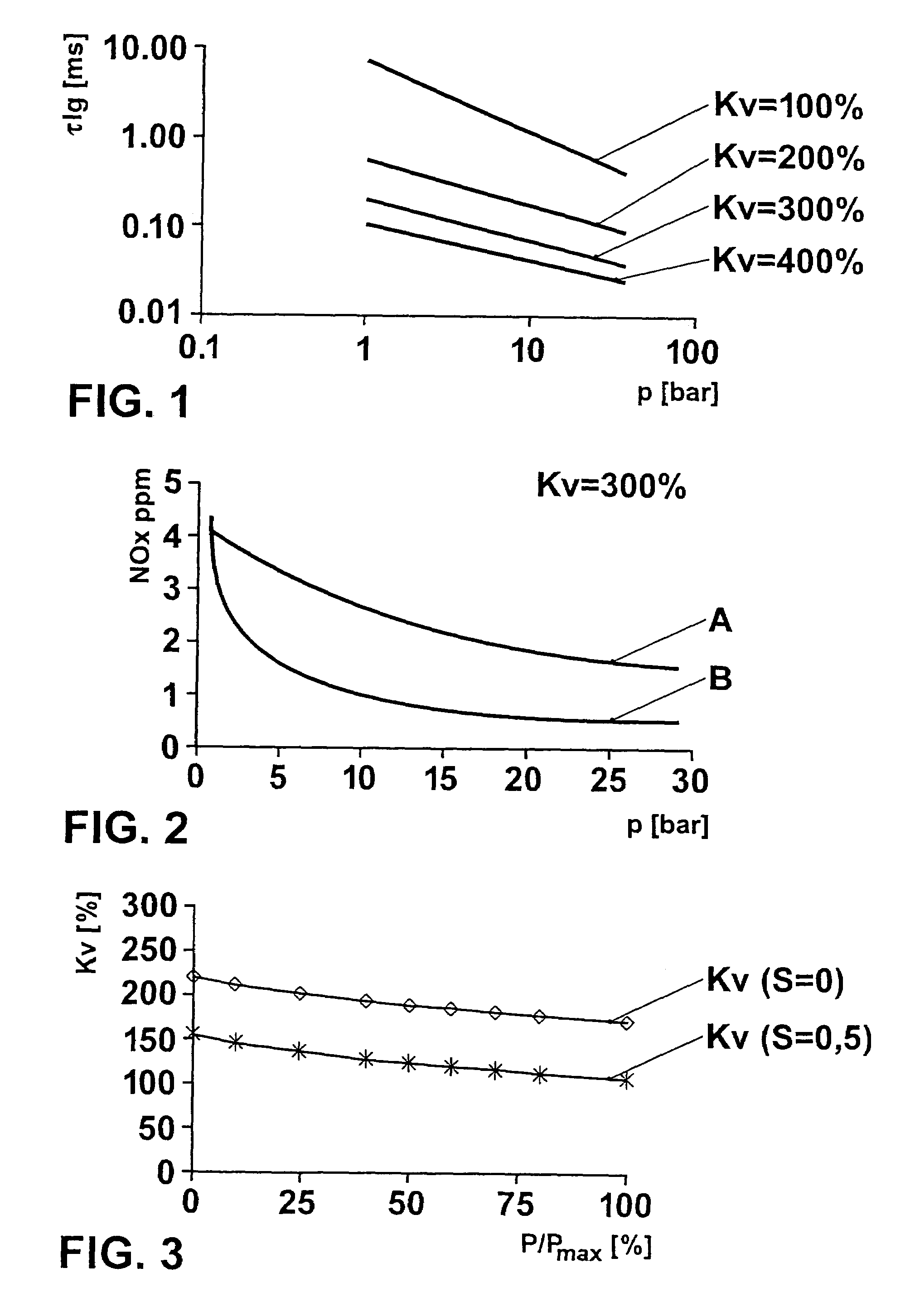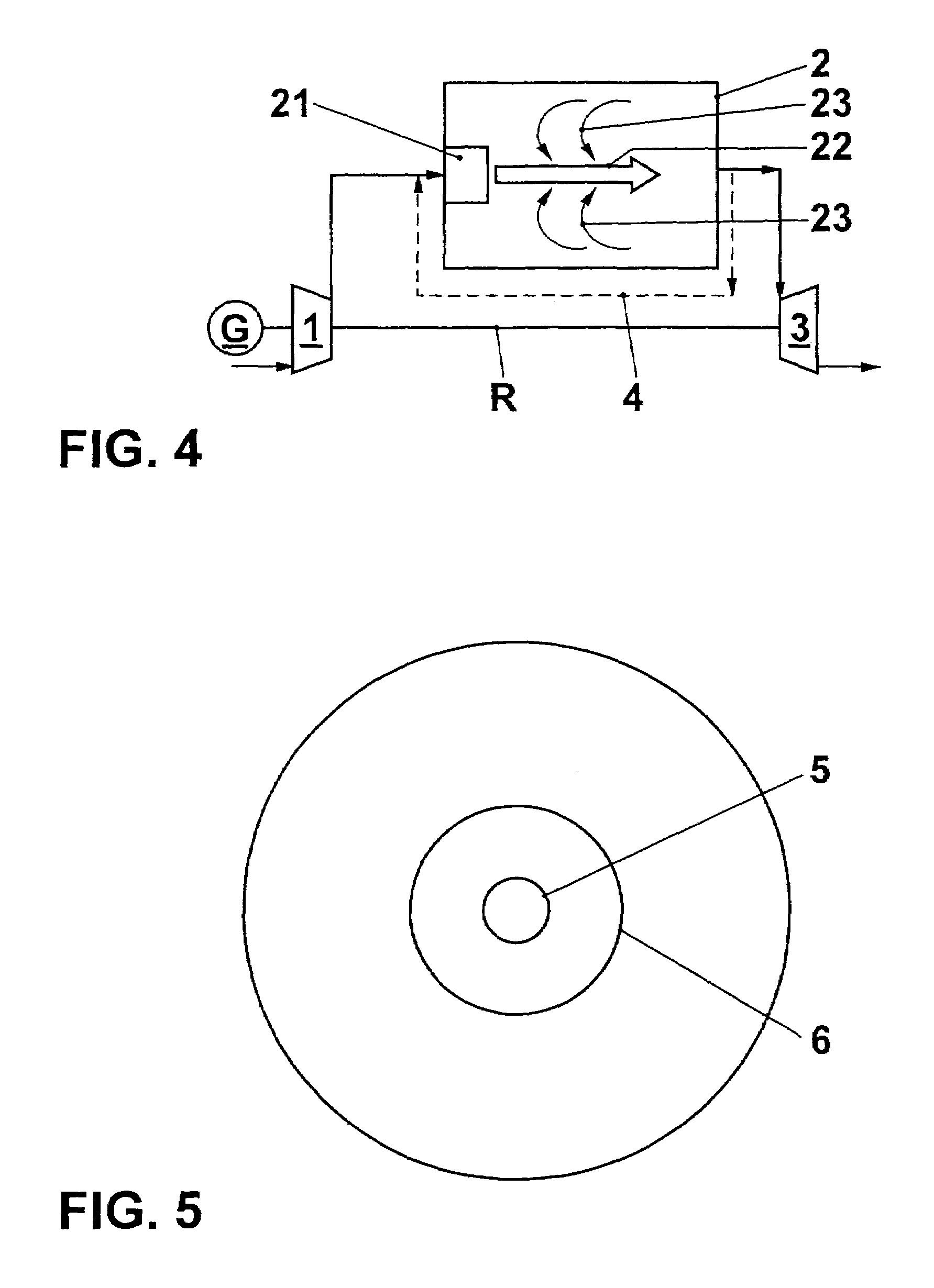Method for combustion of a fuel
a fuel and combustion method technology, applied in the field of fuel combustion methods, can solve the problems of reducing reducing the efficiency of combustion, and reducing so as to minimize the residence time and the risk of pressure pulses, and the effect of widening the operating or load rang
- Summary
- Abstract
- Description
- Claims
- Application Information
AI Technical Summary
Benefits of technology
Problems solved by technology
Method used
Image
Examples
Embodiment Construction
[0063]FIG. 4 diagrammatically depicts a gas turboset. A generator G, a compressor 1 and a turbine 3 are arranged on a common shaft R. The compressor 1 compresses ambient air and delivers it into a combustion chamber 2, where a fuel is burnt in the air. The hot and confined flue gases formed drive the turbine 3. The turbine 3 in turn drives the compressor 1 and the generator G. The combustion in the combustion chamber 2 is intended to take place as spontaneously igniting volumetric combustion of the type described above. The increase in the temperature of a fuel / air mixture provided in the burner 21 to the spontaneous ignition temperature is intended to be effected by admixing hot flue gas which has been recirculated from the combustion chamber. One possible way of doing this is external flue gas recirculation along the path marked by 4. As explained above, this cannot generally be realized without problems. According to the invention, therefore, the flue gas is admixed with the comb...
PUM
 Login to View More
Login to View More Abstract
Description
Claims
Application Information
 Login to View More
Login to View More - R&D
- Intellectual Property
- Life Sciences
- Materials
- Tech Scout
- Unparalleled Data Quality
- Higher Quality Content
- 60% Fewer Hallucinations
Browse by: Latest US Patents, China's latest patents, Technical Efficacy Thesaurus, Application Domain, Technology Topic, Popular Technical Reports.
© 2025 PatSnap. All rights reserved.Legal|Privacy policy|Modern Slavery Act Transparency Statement|Sitemap|About US| Contact US: help@patsnap.com



